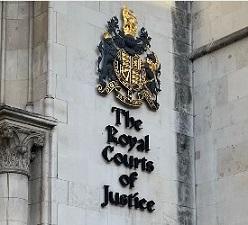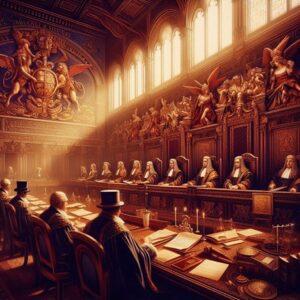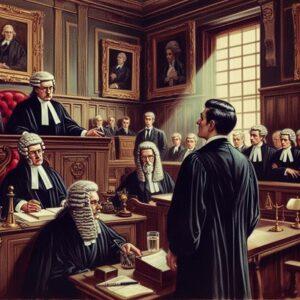The Royal Courts of Justice are a grand court building situated in The Strand London England which are located opposite to the Temple Bar Memorial Pillar.
The Royal Courts of Justice serves as the central court of the High Court of Justice and the Court of Appeal.
His Majesty King Charles III visited the Royal Courts of Justice (RCJ) on the 14th December 2023 for a historic event which celebrated the relationship between the monarchy and the judiciary. The King was met by Lady Carr, Lady Chief Justice of England and Wales (LCJ), who hosted his visit, as well as many judges and magistrates, and Judicial Office and HM Courts and Tribunals Service (HMCTS) staff.
King Charles III visits the Royal Courts of Justice
About the Royal Courts of Justice
The High Court of Justice in London, known properly as His Majesty’s High Court of Justice in England, together with the Court of Appeal and the Crown Court, are the Senior Courts of England and Wales.
Its name is abbreviated as EWHC (England and Wales High Court) for legal citation purposes.
It deals at first instance with all high value and high importance civil law (non-criminal) cases, and also has a supervisory jurisdiction over all subordinate Courts and Tribunals, with a few statutory exceptions.
The High Court consists of 3 divisions: the King’s Bench Division, the Family Division, and the Chancery Division.
The Central London County Court deals with civil cases of varying complexity and value, including disputes between individuals, businesses, and organisations and is one of the largest County Courts in England and Wales. The County Court is located in the Thomas More Building.
History of the Building
The Royal Courts of Justice building, located on The Strand, was designed by architect George Edmund Street and completed in 1882.
Its impressive Victorian Gothic architecture, grandeur and history make it one of the most recognizable landmarks in London, attracting thousands of tourists and legal professionals every year.
The Royal Courts of Justice was built to address the need for a larger, more centralised court system in London. Prior to its construction, there were several different courts throughout the city that were responsible for different types of cases. This led to confusion and inefficiency, and it was decided that a new, purpose-built courthouse was needed.
The building of the Royal Courts of Justice began in 1873 and took nearly a decade to complete. The cost of construction was substantial, with estimates suggesting that it was around £1.2 million, which was a significant sum of money at the time. The building’s design was based on Gothic architecture, which was popular during the Victorian era.
The Royal Courts of Justice was officially opened by Queen Victoria in 1882. Since then, it has played a central role in the British legal system, serving as the site of many significant cases over the years.
The Royal Courts of Justice is a fascinating and impressive court building that is steeped in history. Its grand architecture and impressive design reflect the importance of the legal system in British society, and it is a must-visit destination for anyone interested in law and history.
Visiting the Royal Courts of Justice
If you are planning on visiting the Royal Courts of Justice you should read the Royal Courts of Justice webpage on the Find a Court or Tribunal service.
Court and tribunal hearings in England and Wales usually take place in public. This means you can observe a court or tribunal hearing whether you’re a journalist, academic or member of the public.
The Royal Courts of Justice daily cause list lists all cases for trial in the Royal Courts of Justice and its outlying buildings.
If you are attending any court, it is important to be aware of what you are allowed to bring with you, as well as what is prohibited. The general rules Going through security at a court or tribunal building should be referred to.
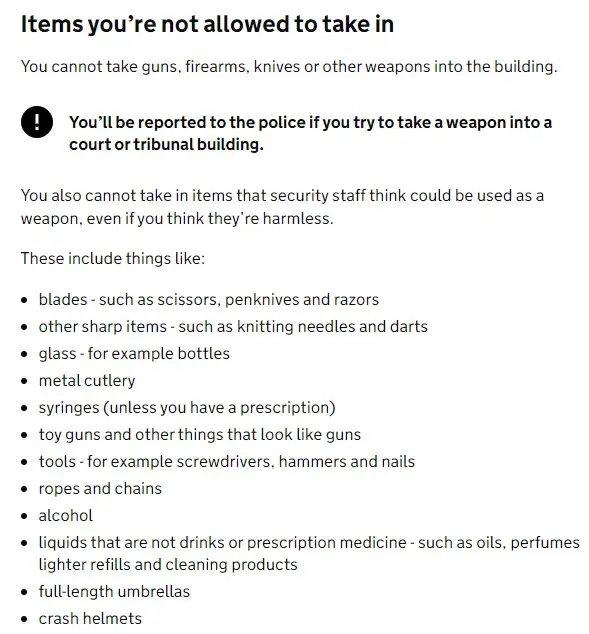
Surrender and seizure of articles
(1)If a court security officer acting in the execution of his duty reasonably believes that an article in the possession of a person who is in, or seeking to enter, a court building ought to be surrendered on any of the grounds given in subsection (3), he must ask the person to surrender the article.
(2)If the person refuses to surrender the article, the officer may seize it.
(3)The grounds are that the article—
(a)may jeopardise the maintenance of order in the court building (or a part of it),
(b)may put the safety of any person in the court building at risk, or
(c)may be evidence of, or in relation to, an offence.
Courts Act 2003 Part 4 Section 54
Spoons at the Royal Courts of Justice
The Royal Courts of Justice appear to have different prohibited item rules to other courts as detailed in Version 1.03 of a Ministry of Justice (MoJ) document (with obligatory spelling mistakes) obtained on the 2nd November 2022. This document may have been updated since.
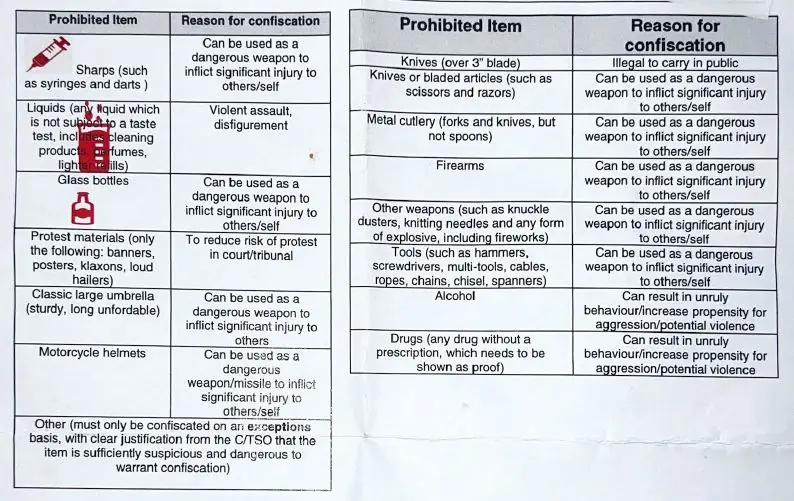
As you will notice, Metal cutlery is prohibited but Spoons are explicitly allowed ! They can clearly be used as weapon. How and why are they allowed ?
Read the reviews of Gavin Howe Barrister
Latest Articles
- What is a Paralegal ?A paralegal is a legal professional who performs tasks that require knowledge of legal concepts but does not hold the… Read more: What is a Paralegal ?
- What is a Judgment ?A judgment, also known as a judicial decision or court ruling, is the final decision made by a court of… Read more: What is a Judgment ?
- What is an Adverse Inference ?Adverse inference is a legal principle that plays a significant role in various areas of law, including criminal, civil, and family law. It arises… Read more: What is an Adverse Inference ?
- BarristersA barrister is anyone who has been Called to the Bar in England and Wales. For a barrister to offer… Read more: Barristers
